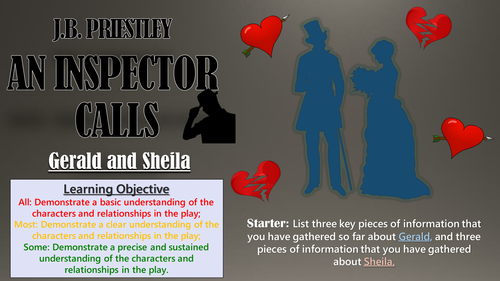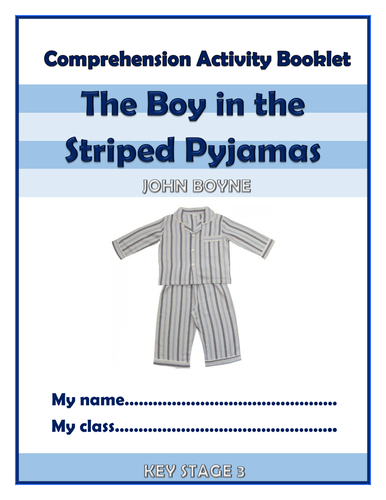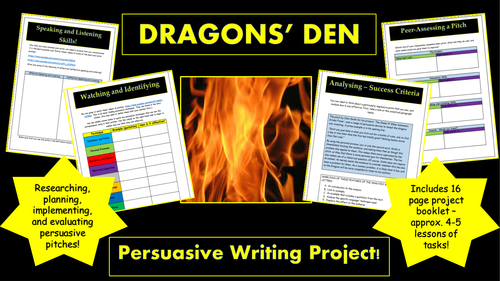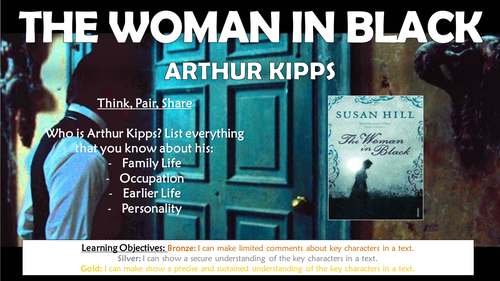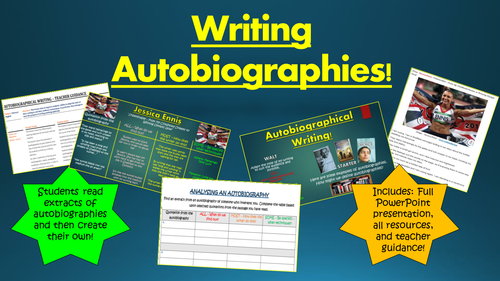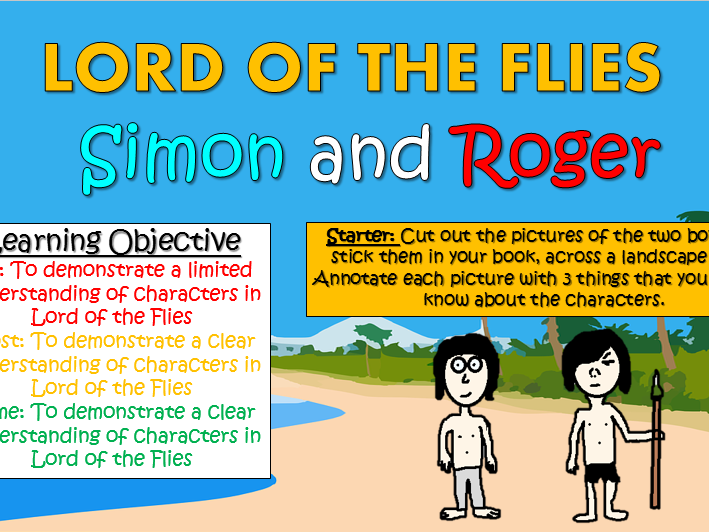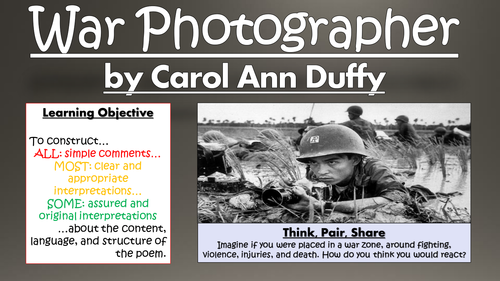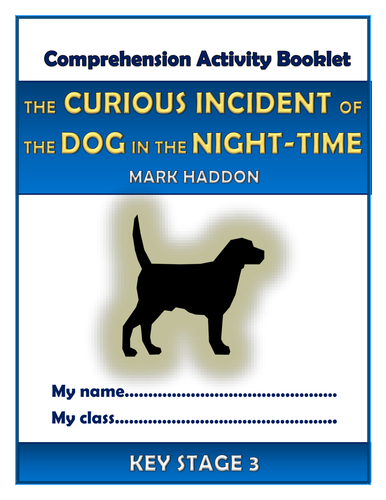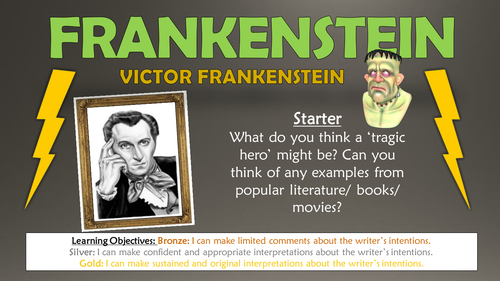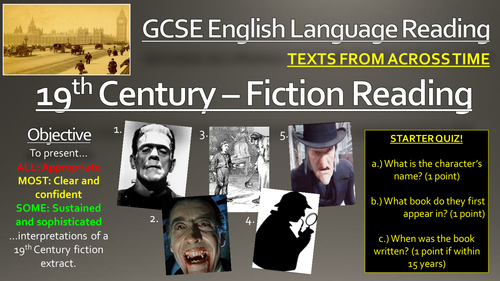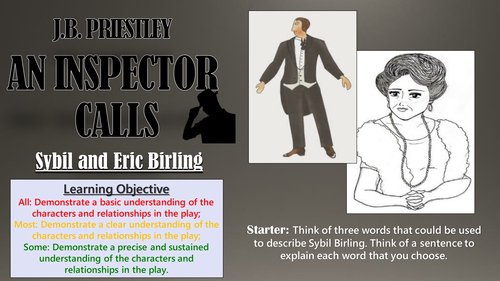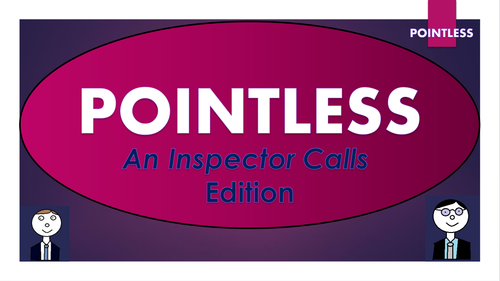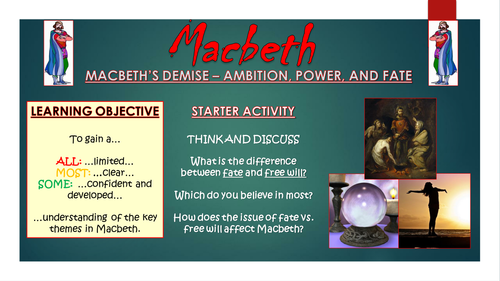
3k+Uploads
1898k+Views
2231k+Downloads
New teachers

An Inspector Calls: Gerald and Sheila
This interesting and engaging lesson enables students to build their understanding of the relationship between Gerald and Sheila, two of the main characters in ‘An Inspector Calls.’ In particular, students learn about about how both characters contribute to the downfall of Eva Smith, and how their relationship is affected as details of their actions emerge.
The lesson follows a clear, logical, bite-size learning journey, which guides students towards differentiated learning objectives. Over the course of this journey, they become able to:
- Recall and understand the key features of Gerald and Sheila's character profiles;
- Link Gerald and Sheila to the historical context of the play;
- Read and understand the section of the play in which Gerald is interviewed by the inspector;
- Analyse the effect of Gerald's revelations on the relationship of Gerald and Sheila;
- Create a diary-entry piece in which they consider Gerald's character and relationships with both Sheila and Daisy Renton;
-Peer/self-assess learning attempts.
This resource pack includes:
- A visually engaging whole-lesson PowerPoint presentation;
- A clear and interesting worksheet for the development task (with answer sheet);
- An extract from Act 2 of the play for students to read and interpret;
- Guidance for completing diary entries;
- A detailed lesson plan, complete with what the teacher and students should aim to achieve at each stage of the lesson.
All images are licensed for commercial use, and are cited on the final slide of the PowerPoint.
Bundle Sale

Stone Cold Big Bundle!
THIS BUNDLE CONTAINS ALL OF THE STONE COLD LESSONS, IN ADDITION TO THE COMPREHENSION BOOKLET, THE KNOWLEDGE ORGANISER AND THE POINTLESS GAME!
This engaging, varied, and informative scheme of learning is designed to help students gain understanding, assessment skills, and key interpretations of Robert Swindells’ ‘Stone Cold.’ Made up of a wide-range of interesting and exciting lessons, students should complete this scheme having gathered vital skills in: interpreting the significant meanings of the text, understanding the writer’s ideas within the text, identifying the traits of key characters, settings, and themes, understanding dramatic and language devices, and relating the text to its social and historical context.
Stimulating, visual, and easily adaptable, these lessons provide suggested learning objectives and outcomes for students of a wide-range of abilities - The vast majority of tasks are differentiated to allow for different abilities and needs in your classroom. Each lesson loosely follows this logical learning journey to ensure that students learn in bite-size steps:
- Engaging
- Defining/ Understanding
- Identifying/Remembering
- Analysing/ Creating
- Peer or self evaluating.
All of the lessons are interactive, employ a variety of different teaching and learning methods and styles, and are visually-engaging. Resources, worksheets, and lesson plans are all provided.

The Boy in the Striped Pyjamas - KS3 Comprehension Activities Booklet!
This resource booklet contains a wide range of age-appropriate, engaging, and meaningful comprehension activities for use throughout the reading of John Boyne's 'The Boy in the Striped Pyjamas.' Teachers have found them particularly useful in comprehension or guided reading sessions. They are perfect for aiding the progress of children towards meeting the KS3 expectations within the new National Curriculum framework. Children have found these resources extremely engaging, and for teachers there is explicit information within each task regarding which comprehension strands the task is designed to demonstrate. They also relate to key extracts, characters, and themes from the story, ensuring that children gain a deep understanding of the text.
Activities within the booklet include:
- 'Context: The Holocaust' - to enable students to demonstrate that they can: 'Know the purpose, audience and context of the writing and drawing on this knowledge to support comprehension.'
- 'Boyne's Description - The Ending' - to enable students to demonstrate that they can: 'Know how language, including figurative language, vocabulary choice, grammar, text structure and organisational features, present meaning.'
- 'Bruno's Father' and 'Shmuel' - to enable students to demonstrate that they can: 'Study setting, plot, and characterisation, and the effects of these.'
- 'Vocabulary Inspector' - to enable students to demonstrate that they can: 'Learn new vocabulary, relating it explicitly to known vocabulary and understanding it with the help of context and dictionaries.'
Plus many, many more activities (the booklet is 21 pages in length!) I've also added it as a PDF in case the formatting differs on your computer.
All images are licensed for commercial use, and are cited on a separate document (included).

Dragons' Den Persuasive Project! (Building Speaking & Listening and Persuasive Writing Skills!)
This resource is perfect for enabling students to build both their persuasive writing and their speaking and listening skills. Based upon the popular BBC series 'Dragons' Den', students have the opportunity to research, design, pitch, and evaluate arguments for their own inventions, whilst simultaneously analysing persuasive pitches, revising persuasive techniques, structuring arguments and articulating convincingly.
Included is a 16 page booklet (I would say at least 4-5 hour lessons of tasks) that lead students to:
- Introduce themselves and their interests;
- Watch persuasive pitches (links included) and identify persuasive devices;
- Analyse why persuasive devices are effective;
- Structure an analysis appropriately;
- Brainstorm ideas for an invention using imagination and helpful aiding questions;
- Formulate an argument by considering key questions and counter arguments;
- Write and present a persuasive pitch;
- Peer-evaluate and self-evaluate persuasive pitches.
I have also provided some examples of news stories featuring the worst and best pitches from the den, in order to provoke discussion about what makes a strong pitch.
All images are licensed for commercial use and are cited throughout.

The Woman in Black: Arthur Kipps!
This engaging and informative lesson enables students to make precise and sustained interpretations regarding the portrayal of Arthur Kipps throughout Susan Hill’s The Woman in Black. In particular, students consider how Kipps is initially presented, and how his character is developed throughout the text.
The lesson follows a step-by-step learning journey, in which children learn through:
- Reading and understanding how Arthur's character is introduced to the reader;
- Understanding and comprehending the different events that Arthur experiences;
- Considering how these different events shape and alter Arthur's emotions and personality;
- Analysing how Hill presents and develops Arthur's character throughout the text;
- Peer assessing each other's learning attempts.
Included is:
- Whole lesson PowerPoint - colourful and comprehensive;
- Selected extracts from 'The Woman in Black'
- Arthur Kipps stress graph;
- Analysis template with success criteria for creating well-structured responses;
- Comprehensive lesson plan.
There are also opportunities for group learning, peer assessment, and whole class discussion. This was originally taught to mixed ability year 10 groups, but can easily be differentiated for groups of different ages and abilities.
All images are licensed for commercial use, and image rights are listed on the last page of the presentation.

Frankenstein: The Monster's Murders: Justified?
This lesson aims to improve students’ understanding of plot and characterisation in Mary Shelley’s gothic horror novel 'Frankenstein,' through critical engagement with the monster’s justification for murder. The lesson places a particular focus upon the hardship and suffering experienced by the monster, in addition to the discrimination and loneliness that he experiences. The lesson concludes with students completing a highly-informed argumentative piece, detailing whether they feel the monster was justified or not.
The lesson follows a step-by-step learning journey, in which children learn through:
- Recalling and understanding who, when, and why the monster kills individuals throughout the text;
- Reading and understanding key extracts from the text, which include third-person narration from the monster discussing his actions;
- Comprehending the key elements of plot development and character, through interpreting and inferring the key meanings in extracts;
- Listing opposite sides of an argument in regarding the monster's justification, in order to build a stronger case;
- Using the features of writing to argue in order to contend whether the monster was justified in his actions or not;
- Peer assessing each other's learning attempts.
Included is:
- Whole lesson PowerPoint - colourful and substantial; (including an animated Frankenstein's monster to guide them through the lesson);
- Comprehension worksheet (and a teacher answer sheet);
- Extracts from Chapters 16 and 24;
- Card-sorting resources for the introduction task;
- Writing to Argue Help-sheet;
- Analysis template with success criteria for creating well-structured responses;
- Comprehensive lesson plan.
There are also opportunities for group learning, peer assessment, and whole class discussion. This was originally taught to middle-ability year 9/10 groups, but can easily be differentiated for groups of different ages and abilities.
All images are licensed for commercial use, and image rights are listed on the last page of the presentation.

Writing Autobiographies!
This stimulating and informative lesson aims to improve students’ ability to adapt the style of their writing to suit their audience and purpose. In particular, they attempt to meet the purpose of writing autobiographically.
Students follow a clear and logical learning journey, in which they:
-Define autobiographies and their key features;
-Read extracts of autobiographies, and analyse the language techniques used;
-Use independent learning skills to analyse an autobiography of their choice;
-Create a success criteria for effective autobiography writing (although a ready-made success criteria is included)
-Write a section of their own autobiography, using the techniques that they have learnt;
-Peer/self-assess their autobiographical attempts.
There are enough resources here really for two lessons, including:
-Visually engaging whole-lesson PowerPoint;
-Autobiography extract;
-Analysing Autobiographies template;
-Success Criteria;
-Step-by-step lesson plan.
All images are licensed for commercial use, and are cited on the final page of the slide.

Lord of the Flies: Simon and Roger
This interesting and highly-stimulating lesson enables students to gain a clear understanding of how the characters of Simon and Roger are introduced and developed in William Golding’s Lord of the Flies. Students learn to compare and contrast the two characters, with particular reference to their respective propensities for kindness and savagery.
The lesson follows a clear, logical, bite-size learning journey, which guides students towards differentiated learning objectives. Over the course of this journey, they become able to:
- Use illustrations to explain what they already know about each of the characters;
- Understand how each of the characters are introduced, and demonstrate an awareness of the role that they play on the island;
- Read and understand Chapters Eight, Nine, and Ten of the play, with a particular focus upon how the characters of Simon and Roger can be compared, and how they develop over time;
- Analyse key quotations about/by each of the characters,interpreting what this shows the readers about their characters;
- Complete a comparison between the two characters, in response to an essay-style question;
-Peer assess each other's learning attempts.
This resource pack includes:
- A visually engaging whole-lesson PowerPoint presentation;
- Detailed worksheets, with answer sheets where necessary;
- Links to the extracts of the text needed for the lesson (Chapters Eight, Nine and Ten in this case);
- Original images for students to complete their annotations;
- A logically scaffolded essay template;
- A detailed lesson plan, complete with what the teacher and students should aim to achieve at each stage of the lesson.
All images are licensed for commercial use, and are cited on the final slide of the PowerPoint.

Much Ado About Nothing - KS3 Comprehension Activities Booklet!
This resource booklet contains a wide range of age-appropriate, engaging, and meaningful comprehension activities for use throughout the reading of William Shakespeare's 'Much Ado About Nothing.' Teachers have found them particularly useful in comprehension or guided reading sessions. They are perfect for aiding the progress of children towards meeting the KS3 expectations within the new National Curriculum framework. Children have found these resources extremely engaging, and for teachers there is explicit information within each task regarding which comprehension strands the task is designed to demonstrate. They also relate to key extracts, characters, and themes from the story, ensuring that children gain a deep understanding of the text.
Activities within the booklet include:
- 'Context: Life in Shakespeare's Times' - to enable students to demonstrate that they can: 'Know the purpose, audience and context of the writing and drawing on this knowledge to support comprehension.'
- 'Shakespeare's Description' - to enable students to demonstrate that they can: 'Know how language, including figurative language, vocabulary choice, grammar, text structure and organisational features, present meaning.'
- 'Hero' - to enable students to demonstrate that they can: 'Study setting, plot, and characterisation, and the effects of these.'
- 'Vocabulary Inspector' - to enable students to demonstrate that they can: 'Learn new vocabulary, relating it explicitly to known vocabulary and understanding it with the help of context and dictionaries.'
Plus many, many more activities (the booklet is 22 pages in length!) I've also added it as a PDF in case the formatting differs on your computer.
All images are licensed for commercial use, and are cited on a separate document (included).

Ozymandias - Percy Bysshe Shelley
This engaging, comprehensive lesson provides an interesting and highly-informative study of Percy Bysshe Shelley's power and conflict poem: 'Ozymandias.' Throughout the lesson, students gain a detailed understanding of the poem, with a particular focus upon the content, language, and structural features employed by Shelley. By the end of the lesson, students demonstrate their knowledge of the text analytically, through assured, appropriate, and sustained interpretations.
The lesson follows a step-by-step learning journey, in which children learn through:
- Defining the key concept of power, and considering its role and implications in man's actions;
- Securing contextual understanding of both Ozymandias the ruler, and Percy Bysshe Shelley the poet;
- Reading and interpreting the poem, using a provided line-by-line analysis, and interactive group activities;
- Developing their understanding through inferring and analysing key language and structural choices;
- Analysing how the theme of power is explored through Shelley's content, language, and structure;
- Peer assessing each other's learning attempts.
Included is:
- Whole lesson PowerPoint - colourful and substantial; (including hyperlinks to informative and engaging videos)
- Copy of poem;
- Content, language and structure mind map;
- Deeper thinking worksheet;
- Analysis template with success criteria for creating well-structured responses;
- Comprehensive lesson plan.
There are also opportunities for group learning, peer assessment, and whole class discussion. This was originally taught to middle-ability year 9/10 groups, but can easily be differentiated for groups of different ages and abilities.
All images are licensed for commercial use, and image rights are listed on the last page of the presentation.

War Photographer - Carol Ann Duffy
This engaging, comprehensive lesson aims to improve students’ understanding of Carol Ann Duffy’s contemporary war poem ‘War Photographer’ with particular focus upon the language and structure used within the poem to depict the photographer’s experiences. By the end of the lesson, students demonstrate their knowledge of the text analytically, through assured, appropriate, and sustained interpretations.
The lesson follows a step-by-step learning journey, in which children learn through:
- Defining the role of the war photographer, and understanding difficulties in their job;
- Securing contextual understanding of Carol Ann Duffy - the poet;
- Reading and interpreting the poem, using a provided line-by-line analysis, and interactive group activities;
- Developing their understanding through inferring and analysing key language and structural choices;
- Understanding how the war photographer's life varies between war-torn locations and 'Rural England;'
- Analysing how language and structure are used to portray the photographer' experiences;
- Peer assessing each other's learning attempts.
Included is:
- Whole lesson PowerPoint - colourful and substantial; (including hyperlinks to informative and engaging videos)
- Copy of poem;
- Deeper thinking worksheet (including a scaffolded version, and a teacher answer sheet);
- Analysis template with success criteria for creating well-structured responses;
- Comprehensive lesson plan.
There are also opportunities for group learning, peer assessment, and whole class discussion. This was originally taught to middle-ability year 9/10 groups, but can easily be differentiated for groups of different ages and abilities.
All images are licensed for commercial use, and image rights are listed on the last page of the presentation.

The Curious Incident of the Dog in the Night-time KS3 Comprehension Activities Booklet!
This resource booklet contains a wide range of age-appropriate, engaging, and meaningful comprehension activities for use throughout the reading of Mark Haddon's 'The Curious Incident of the Dog in the Night-time.' Teachers have found them particularly useful in comprehension or guided reading sessions. They are perfect for aiding the progress of children towards meeting the KS3 expectations within the new National Curriculum framework. Children have found these resources extremely engaging, and for teachers there is explicit information within each task regarding which comprehension strands the task is designed to demonstrate. They also relate to key extracts, characters, and themes from the story, ensuring that children gain a deep understanding of the text.
Activities within the booklet include:
- 'Context: Asperger's Syndrome' - to enable students to demonstrate that they can: 'Know the purpose, audience and context of the writing and drawing on this knowledge to support comprehension.'
- 'Haddon's Description - The Police Station' - to enable students to demonstrate that they can: 'Know how language, including figurative language, vocabulary choice, grammar, text structure and organisational features, present meaning.'
- 'Ed Boone' - to enable students to demonstrate that they can: 'Study setting, plot, and characterisation, and the effects of these.'
- 'Vocabulary Inspector' - to enable students to demonstrate that they can: 'Learn new vocabulary, relating it explicitly to known vocabulary and understanding it with the help of context and dictionaries.'
Plus many, many more activities (the booklet is 21 pages in length!) I've also added it as a PDF in case the formatting differs on your computer.
All images are licensed for commercial use, and are cited on a separate document (included).

Frankenstein: Victor Frankenstein - The Tragic Hero
This engaging and detailed lesson aims to improve students’ understanding of the lead protagonist in Mary Shelley’s Frankenstein: Victor Frankenstein. The lesson places a particular focus upon how Victor fits the role of a tragic hero, and it studies the actions and behaviours that lead to his inevitable demise. Students also analyse how Shelley uses the character of Victor to present key messages about religion, unchecked ambition, and the treatment of the ‘others’ in society.
The lesson follows a step-by-step learning journey, in which children learn through:
- Defining the role of the tragic hero and exploring how Victor personifies these features;
- Understanding prevailing attitudes towards religion, ambition, and appearances, and investigating how Victor would have been received considering these ideas;
- Reading and understanding extracts in which Victor's fatal flaws are evident, and considering how they are relevant;
- Analysing how Shelley utilises Victor and his demise to present key messages to readers;
- Linking knowledge of time, place, and author, and relating these to specific areas of the text;
- Peer assessing each other's learning attempts.
Included is:
- Whole lesson PowerPoint - colourful and substantial; (including an animated Frankenstein's monster to guide them through the lesson);
- Mood map - to track Victor's role in the plot and eventual destruction;
- 'Frankenstein's Actions' worksheet;
- Analysis template with success criteria for creating well-structured responses;
- Comprehensive lesson plan.
There are also opportunities for group learning, peer assessment, and whole class discussion. This was originally taught to middle-ability year 10 groups, but can easily be differentiated for groups of different ages and abilities.

Lord of the Flies: The Ending
This interesting and highly-stimulating lesson enables students to make clear and sustained interpretations about the final chapters of William Golding’s Lord of the Flies. Students engage analytically with the key events, characters, and quotations in the closing stages of the novel, and interpret patterns in the development of their behaviour from earlier sections of the text.
The lesson follows a clear, logical, bite-size learning journey, which guides students towards differentiated learning objectives. Over the course of this journey, they become able to:
- Sort key events from earlier chapters to re-familiarise themselves with the events of the text;
- Think creatively about how different objects, ideas, and characters are represented throughout different sections of the text;
- Read and understand Chapters Eleven and Twelve of the play, with a particular focus upon how the behaviour of the key characters has developed over time;
- Chart the balance between civilization and savagery over the course of the novel, justifying decisions based upon relevant textual evidence;
- Analyse the how the behaviour of the key characters alters over the course of the novel, through answering a structured exam-style question;
-Peer assess each other's learning attempts.
This resource pack includes:
- A visually engaging whole-lesson PowerPoint presentation;
- Plot Cards for the card-sorting activity;
- Links to the extracts of the text needed for the lesson (Chapters Eleven and Twelve in this case);
- Graph template with justification boxes for the development activity;
- A logically scaffolded essay template;
- A detailed lesson plan, complete with what the teacher and students should aim to achieve at each stage of the lesson.
All images are licensed for commercial use, and are cited on the final slide of the PowerPoint.

New GCSE English Language Reading: 19th Century Fiction
These informative and engaging resources enable students to build the skills needed to interpret and analyse 19th Century fiction texts. This will aid students through the new Paper 1 Section A of GCSE English Language - for which they need to become confident readers of 19th, 20th, and 21st Century texts. These resources give students a strong foundation of knowledge of features of fiction texts in the 19th Century, using Mary Shelley's Frankenstein as the predominant example. There are easily enough resources for at least two lessons within this resource pack.
Students learn through the following tasks:
- Gauging and collaborating previous knowledge through an interactive starter task;
- Identifying the descriptive devices in sentences written about 19th Century characters;
- Building close reading skills through a study of a fiction extract from Frankenstein
- Answering exam-style questions interpreting and inferring the key meanings in the text;
- Using models and templates to write extended analysis responses about the descriptive language used in the fiction extract;
- Peer assessing their partners' learning attempts.
The following resources are provided:
- Engaging and colourful step-by-step PowerPoint
- Frankenstein extract
- Teacher lesson guidance;
- Interpretation worksheet;
- Analysis worksheet;
- Writing to analyse help-sheet
All images are licensed for commercial use, and are cited on the final slide of the PowerPoint.

An Inspector Calls: Sybil and Eric Birling - Double Lesson!
This interesting and engaging double lesson enables students to build their understanding of Sybil and Eric Birling, two of the main characters in ‘An Inspector Calls.’ In particular, students learn about how both characters contribute to the downfall of Eva Smith, and note the variation in their sense of responsibility. This is linked to Priestley’s overall message regarding community and responsibility in Edwardian Britain.
The lesson follows a clear, logical, bite-size learning journey, which guides students towards differentiated learning objectives. Over the course of this journey, they become able to:
- Recall and understand the key features of Sybil and Eric's character profiles;
- Link Sybil and Eric to the historical context of the play;
- Read and understand the sections of the play in which Sybil and Eric are interviewed by the inspector;
- Analyse each of the characters in response to key questions;
- Compare the two characters, in terms of: their attitudes to the working classes; their attitudes towards the inspector, and their sense of responsibility for Eva Smith's death;
-Peer/self-assess learning attempts.
This resource pack includes:
- A visually engaging whole-lesson PowerPoint presentation;
- A clear and interesting worksheet on interpreting Mrs. Birling's character (with answer sheet);
- Extracts from Act 2 and Act 3 of the play for students to read and interpret;
- A scaffolded template for students to complete the comparison task;
- A detailed lesson plan, complete with what the teacher and students should aim to achieve at each stage of the lesson.
All images are licensed for commercial use, and are cited on the final slide of the PowerPoint.

An Inspector Calls Pointless Game (and blank template to make your own games!)
Based on the popular game show 'Pointless', this resource is perfect for use as a whole lesson resource, enrichment option, or revision tool. Editable, so that you can change to any other topic or change questions. (I've also added a blank template so that you can make your own games from scratch). Containing almost 30 slides of sound clips, engaging visuals, and suitably challenging questions, this resource is effective at both promoting engagement and enhancing learning. There are several full rounds of questions to build or revisit knowledge of characters, plot, and themes in 'An Inspector Calls.'
Round 1. The characters in An Inspector Calls (takes approx 10 mins)
Round 2. Quotations from the text (takes approx 15 mins)
3. Settings, themes, and objects (takes approx 15 mins)
4. Themes in An Inspector Calls (takes approx 10 mins)
The nature of this game ensures that the resource can challenge students of all levels.

Dr Jekyll and Mr Hyde: Description of Mr Hyde!
This engaging and informative lesson enables students to make sustained and insightful interpretations of Stevenson’s language when describing Mr Hyde throughout the novella ‘Strange Case of Dr Jekyll and Mr Hyde.’ In particular, students analyse how the use of similes, varied verbs, and repetition, contribute to the portrayal of devilish man deprived of a social or moral conscience.
The lesson follows a step-by-step learning journey, in which children learn through:
- Understanding key information about 19th Century morality, and learning how the character of Hyde becomes separated from these ideals;
- Reading and comprehending key extracts describing Hyde in the text;
- Exemplifying and analysing Stevenson's use of language devices across his description;
- Describing their own immoral/hideous character utilising the same descriptive techniques;
- Peer assessing each other's learning attempts.
Included is:
- Whole lesson PowerPoint - colourful and comprehensive;
- Selected extracts from the text describing Hyde;
- Stevenson's Language worksheet (and completed answer sheet for teachers);
- Analysis template with success criteria for creating well-structured responses;
- Links to further reading for advanced students (internet access needed for these);
- Comprehensive lesson plan.
There are also opportunities for group learning, peer assessment, and whole class discussion. These resources were originally taught to GCSE students, but with subtle adaptations they have also been used with KS3 and A Level Students.
All images are licensed for commercial use, and image rights are listed on the last page of the presentation.

Year 3 Guided Reading Comprehension Activities Booklet! (Aligned with the New Curriculum!)
Now with PDF version included! This resource booklet contains a wide range of age-appropriate, engaging, and meaningful comprehension activities for use in guided reading sessions. They are perfect for aiding the progress of children towards meeting the Year 3 expectations within the new National Curriculum framework. Children love learning from these resources, whilst they are also of great use to teachers, as there is explicit information within each task regarding which comprehension strands the task is designed to demonstrate. They are also generic enough to ensure that they are appropriate for use with all texts.
Activities and games within the booklet include:
- Mind Reader - to enable students to demonstrate that they can: 'Work out how a character is feeling in a story from their actions, and explain how you know with evidence from the text.'
- Text Inspector - to enable students to demonstrate that they can: 'Use non-fiction texts to find out information on a subject.'
- Rap Battle - to enable students to demonstrate that they can: 'Read aloud poems, and perform playscripts.'
- Organised Ernie - to enable students to demonstrate that they can: 'Say how a text is organised in order to help you understand it, for example using paragraphs, headings, sub-headings, and inverted commas to show speech.'
Plus many, many more activities (the booklet is around 20 pages in length!)
All images are licensed for commercial use, and are cited on a separate document (included.)

Macbeth: The Demise of Macbeth - Ambition, Power, and Fate
This lesson aims to improve students’ understanding of the key themes throughout William Shakespeare’s ‘Macbeth:’ ambition, power, and fate. In particular, students learn how the combination of these three ideas contribute to Macbeth’s eventual downfall, whilst drawing on their analytical reading skills to understand how the themes interweave with the plot throughout the play.
The lesson utilises a range of tasks, that require students to be visual and interactive learners. It follows this learning journey:
- Defining the key terms 'fate' and 'free will', and establishing their relevance within the play;
- Reading and interpreting Act 5 Scene 8, and establishing how Macbeth's death was set in motion long before the battlefield;
- Mapping Macbeth's demise, from his early success as a brave and respected warrior, to his death as a tyrant king;
- Understanding and analysing how the key themes of ambition, power, and his belief in fate contributed to his downfall;
- Peer/self evaluating the learning in the lesson.
Included in this resource pack are:
- A well-presented, thorough, and informative, whole-lesson PowerPoint presentation;
- Resources for the reading and interpreting activity - full scene transcript with space for notes;
- A template and instructions for the 'Mood Mapping' task;
- A template to help scaffold the main task, complete with P.E.E instructions;
- A comprehensive teacher guidance form/lesson plan to assist delivery.
All images in this resource are licensed for commercial use, and are cited on the final slide of the lesson presentation.

